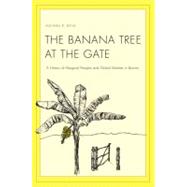
Note: Supplemental materials are not guaranteed with Rental or Used book purchases.
Purchase Benefits
What is included with this book?
| Preface | p. ix |
| Acknowledgments | p. xv |
| Introduction | |
| The Study of Smallholder Commodity Producers | p. 3 |
| The Challenges of the Colonial Trade in the Seventeenth to Nineteenth Centuries | |
| A Native Court's Warning about Involvement in Commodity Production | p. 45 |
| The Antecedent to Cultivating Exotic Rubber: Gathering Native Forest Rubbers | p. 73 |
| Coping with the Contradictions of Capitalism in the Early Twentieth Century | |
| The Construction of Rubber Knowledge in Southeast Asia | p. 101 |
| Depression-Era Responses to Smallholder Rubber Development by Tribesmen and Governments | p. 122 |
| The Indigenous Resolution of the Subsistence/Market Tension | |
| The Dual Economy of Cultivating Rubber and Rice | p. 149 |
| Living Rubber, Dead Land, and Persisting Systems: Indigenous Representations of Sustainability | p. 169 |
| The Conundrum of Resource Wealth versus Political Power | |
| Material Wealth and Political Powerlessness: A Parable from South Kalimantan | p. 197 |
| Plantations and Representations in Indonesia | p. 218 |
| Conclusion | |
| Smallholders and Globalization | p. 247 |
| Notes | p. 259 |
| References | p. 287 |
| General Index | p. 317 |
| Index of Plant Names | p. 330 |
| Table of Contents provided by Ingram. All Rights Reserved. |
The New copy of this book will include any supplemental materials advertised. Please check the title of the book to determine if it should include any access cards, study guides, lab manuals, CDs, etc.
The Used, Rental and eBook copies of this book are not guaranteed to include any supplemental materials. Typically, only the book itself is included. This is true even if the title states it includes any access cards, study guides, lab manuals, CDs, etc.